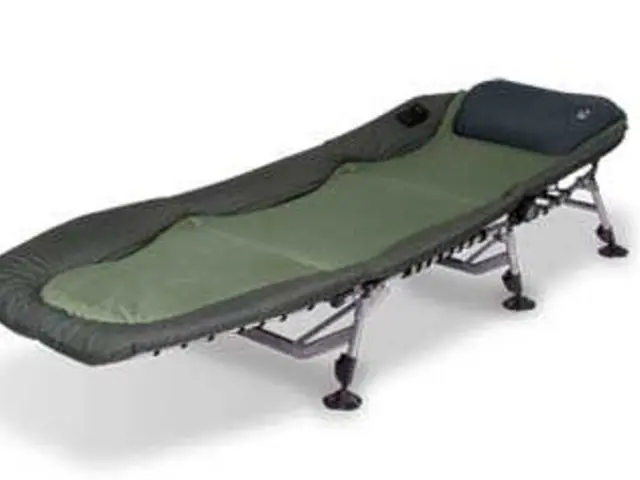Exercising at Home: Maintaining Fitness Without the Need for a Fitness Center
Home Workouts: A Convenient and Flexible Approach to Fitness
Home workouts have gained significant popularity as more individuals opt for personal fitness regimens within their homes. This shift may be attributed to the current global circumstances that prioritize health and safety, making home fitness increasingly appealing.
Home workouts offer advantages that extend beyond mere accessibility. For instance, exercising in a familiar environment can reduce anxiety often associated with organized gym settings. Additionally, the elimination of commuting adds valuable time back into schedules for more focused fitness training. This flexibility is especially attractive for those seeking a balanced lifestyle that includes work, family, and exercise.
Customization is another significant advantage of home workouts. Unlike gym settings that may limit equipment access or class choice, exercising at home provides a personalized approach. Individuals can easily explore various types of workouts and fitness styles, ensuring they find a regime that resonates with them. This personalization encourages consistency, a crucial factor in achieving long-term fitness goals.
Cost savings is an additional benefit of adopting a home workout routine. Gym memberships, personal training sessions, and travel expenses can add up quickly. By utilizing available resources at home, individuals can engage in effective workouts without incurring additional costs, making fitness more accessible to many.
Benefits of Home Workouts
Home workouts offer several benefits beyond mere fitness. Their convenience is compelling, as individuals can exercise in the comfort of their own homes without the need to commute. This flexibility allows for exercise sessions to be easily integrated into daily routines, accommodating personal and professional commitments.
Another advantage is the significant cost savings. Opting for home workouts can reduce or even eliminate financial burdens typically associated with gym memberships. Furthermore, many effective home workout routines require minimal or no equipment, making fitness accessible for everyone, regardless of their financial situation.
Home workouts provide a unique opportunity for personalization. Individuals can tailor their fitness programs to suit their specific preferences, needs, and fitness levels. A variety of workout options—from yoga to high-intensity interval training (HIIT)—ensure individuals can pursue exercises that resonate with them, often leading to greater motivation and adherence to their fitness journey.
Moreover, exercising in a familiar setting often leads to enhanced comfort and privacy, fostering a sense of security and freedom to explore new routines without fear of judgment. Overall, the advantages of home workouts extend beyond mere fitness, promoting a healthier lifestyle in a way that is tailored to individual needs and circumstances.
Essential Equipment for Home Workouts
Embarking on a home workout journey requires the right equipment to optimize effectiveness and enjoyment. While many people may think a fully-equipped gym is necessary for achieving fitness goals, several fundamental tools can be utilized in the comfort of one's home. Key equipment includes:
- Dumbbells (various weights) or resistance bands: ideal for strength training
- Yoga mat: essential for exercises such as yoga, pilates, and floor workouts
- Stability ball: improves core strength and balance
For those on a tight budget, household items can serve as effective alternatives to traditional workout equipment. For instance, water bottles or milk jugs filled with water can act as makeshift dumbbells. A sturdy chair can be used for step-ups or tricep dips. A backpack filled with books can provide extra resistance, offering multiple options for resourceful home workouts.
By utilizing basic equipment and everyday household items, individuals can tailor their home workouts to their needs and goals, proving that staying fit does not require a gym membership.
Importance of Warm-Up Exercises
Warm-up exercises are a vital component of any workout routine, preparing the body for exercise and preventing injuries. Warming up gradually raises the body's core temperature, improves joint mobility, and increases blood flow to muscles, essentially priming them for the workout ahead. This preparation reduces the likelihood of strain or injury, enhances performance, and improves overall flexibility.
Simple Warm-Up Exercises to Perform at Home
Incorporating a warm-up routine into your home workout can be simple and effective. For instance, try dynamic stretches such as arm circles, leg swings, and torso twists. Engage in light cardio moves like jogging in place or high knees to elevate the heart rate gradually. Simple bodyweight exercises, such as squats or lunges, can also activate major muscle groups, readying them for further strain.
Integrating these warm-up exercises into your routine facilitates a solid foundation for any home workout, ensuring that your body is well-prepared and beneficial for the workout ahead.
Bodyweight Exercises for Strength Training
Bodyweight exercises serve as an efficient means to develop strength without the necessity for gym equipment. These exercises harness the individual's body weight as resistance, making them highly accessible for anyone wishing to stay fit. Key exercises such as push-ups, squats, lunges, and planks are integral to any strength training regimen. Incorporating these exercises into your workout routine can help you experience significant improvements in muscular endurance and overall fitness without the need for expensive equipment.
Cardio Workouts at Home
Cardiovascular fitness is essential for overall health. Engaging in activities that increase your heart rate not only improves heart and lung health but also helps in burning calories and enhancing mood. There are various home workout options available, including jumping jacks, burpees, high knees, and dance workouts. By incorporating these cardio exercises into your routine, you can effectively boost your cardiovascular fitness without leaving your home.
Cool Down and Stretching
Cooling down after a workout is a critical component of any well-structured fitness routine. Cooling down enables your body to gradually transition from high exertion to a resting state, facilitating better circulation, reducing muscle soreness, and preventing injuries. A cooldown routine should consist of light activities such as walking in place or slow movements mimicking those in your workout.
Stretching exercises are integral to a comprehensive cooldown routine. Focus on major muscle groups used during your workout to enhance flexibility and promote recovery. Each stretch should be held for approximately 15 to 30 seconds.
In conclusion, a well-designed home workout routine encompasses strength training, cardio, and flexibility exercises. With the right mindset and tools, staying fit at home is entirely possible, affording individuals the opportunity to maintain their fitness levels without the need for a gym.
Home workouts not only cater to personal fitness goals but also contribute to an individual's lifestyle, embracing the concepts of flexibility, personalization, and cost savings. These advantages are further underpinned by the convenience of exercising at home, eliminating commuting and adjusting to personal and professional commitments.
Home workouts require key equipment to optimize effectiveness and enjoyment. Fundamental tools include dumbbells or resistance bands, a yoga mat, and a stability ball, while household items can also serve as effective alternatives.
Warm-up exercises are crucial in any workout routine, reducing the risk of strain or injury, enhancing performance, and improving overall flexibility. Dynamic stretches, light cardio moves, and bodyweight exercises serve as simple yet effective methods to prepare for a workout at home.
Bodyweight exercises are an efficient means to develop strength without the necessity for gym equipment. Key exercises like push-ups, squats, lunges, and planks are integral to any strength training regimen, aiding in muscular endurance and overall fitness.
Cardiovascular fitness is essential for overall health, which can be achieved through various home workout options, including jumping jacks, burpees, high knees, and dance workouts.
Cooling down after a workout is critical for better circulation, reduced muscle soreness, and injury prevention. A cooldown routine should incorporate light activities, while stretching exercises aimed at major muscle groups should be held for approximately 15 to 30 seconds, promoting recovery and flexibility.
Incorporating a well-designed home workout routine that encompasses strength training, cardio, and flexibility exercises allows individuals to maintain their fitness levels without the need for a gym, making staying fit incredibly accessible. This approach further contributes to personal growth and self-development, fostering a deeper commitment to health and wellness.








